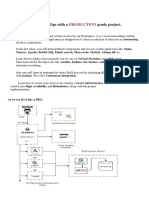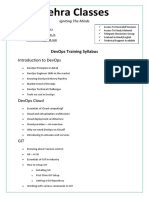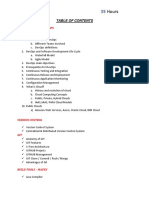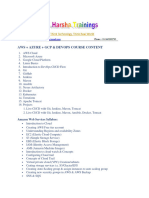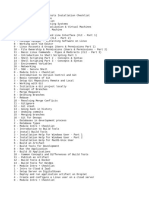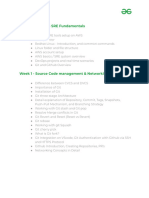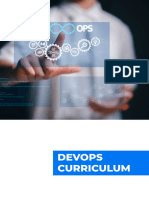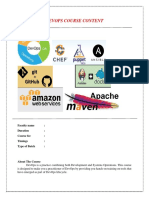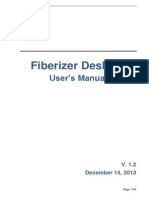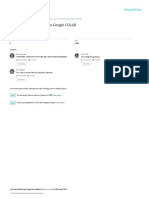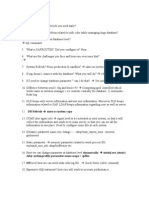0% found this document useful (0 votes)
131 views18 pagesMastering Azure Devops
This document provides an overview of a course on learning Azure DevOps and DevOps tools using a production-grade web application project. It describes using various tools like Ansible, Jenkins, Docker, Kubernetes to automate deploying the application components like databases, services and the build/deployment process. It also covers securing the infrastructure and ensuring high availability and redundancy.
Uploaded by
jatet83497Copyright
© © All Rights Reserved
We take content rights seriously. If you suspect this is your content, claim it here.
Available Formats
Download as PDF, TXT or read online on Scribd
0% found this document useful (0 votes)
131 views18 pagesMastering Azure Devops
This document provides an overview of a course on learning Azure DevOps and DevOps tools using a production-grade web application project. It describes using various tools like Ansible, Jenkins, Docker, Kubernetes to automate deploying the application components like databases, services and the build/deployment process. It also covers securing the infrastructure and ensuring high availability and redundancy.
Uploaded by
jatet83497Copyright
© © All Rights Reserved
We take content rights seriously. If you suspect this is your content, claim it here.
Available Formats
Download as PDF, TXT or read online on Scribd
/ 18

